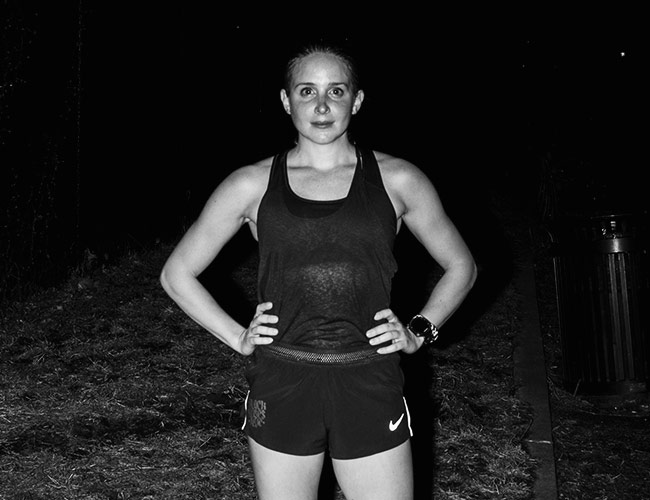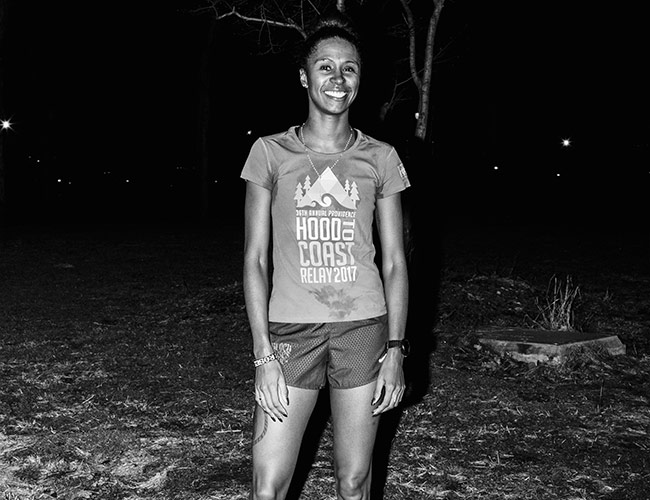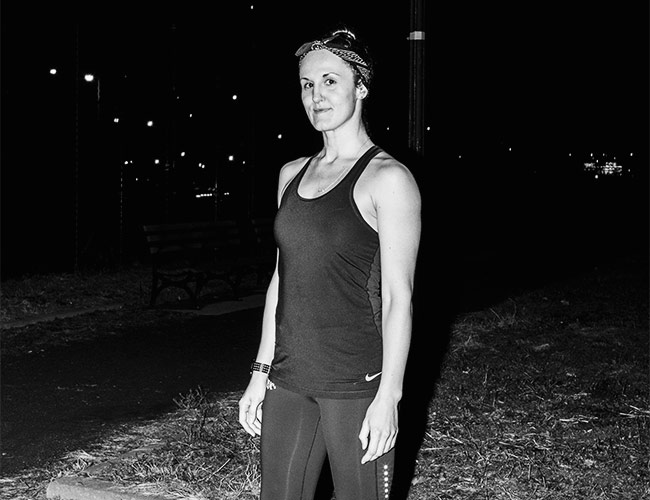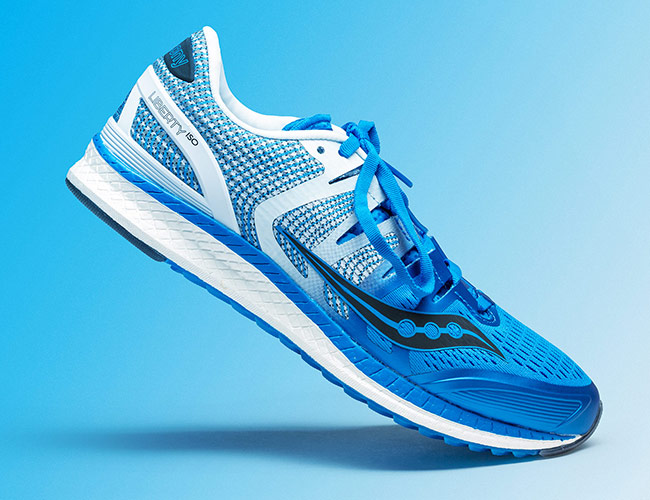every year. The top 100 finishers have their name printed on the front page of the
While you can call Robinson’s trajectory to running success atypical, there are certainly some similarities to running superstars like Mo Farah and Abdi Abdi Raman. He started running in high school, then for the first few years of college at Wake Forest, but “I was dead set on becoming a spoken word artist,” says Robinson. So he quit. His success in the music industry rivals his running success — he’s interviewed everyone from Kayne West to Diplo, The Roots to M.I.A. After taking his 20s off for “sex, drugs and hip-hop,” he jokes, “I got back into running after witnessing the birth of my son 14 years ago.”
Robinson quickly jumped back into the game. “I just saw the hobby of running on the margins of my life…and then there was this shift [after the New York City marathon],” Robinson says. “‘This guy’s in the music business and a magazine editor, how did he get 100th?’ People were asking me how do I work out, how did I transfer to the marathon?” Robinson realized there was a need for training information. “I begrudgingly started to share my point of view on basic training.”
Robinson and Jessie Zapo gathered a group of passionate runners and on January 1, 2013, what’s now known as the Black Roses held its first practice. The group enticed both men and women runners, especially those engrossed in New York City’s downtown life. “There were downtown folks that you’d expect, and then everyone from nurses to out of work bartenders, and marketing types to DJs,” all evenly split in gender, Robinson says. “It’s a cool and eclectic mix. The curiosity of getting into the mysteries of running and also those passionately interested in New York City street culture. Those two twin pulls were the starting [point], and we’ve gone on from there.”
“Our group is based on men and women training together and doing the same work — working together in a collective effort,” says Robinson.
“[Black Roses] is not a coaching program, it’s about developing yourself as runners and as people,” Robinson says. Therefore, Robinson is not really a coach. He’s a leader, he sends texts and emails each week with the training times, but never outlines the actual practice. Yes, each individual has goals, but Black Roses as a group also has goals. Robinson pushes the team to think beyond their own goals and to look at how their group affects the New York City running culture and more broadly, the running culture in general.
The 20-25 person group fluctuates in size throughout the racing season but meets every Tuesday and Thursday, often with a long run on Saturday as well. Among the run crews in the city, the Roses are unique in that they have structured track practices. While it’s a crew you can voluntarily show up at (if you know where to go), you have to get invited to wear the infamous black bib. And practices are fast. In similar fashion to how Robinson trained when he was in Africa with elite runners, the Black Roses mantra is all about the feel, the fast feel. In Robinson’s eyes, race day should be easy since you’re putting in all the work now. Practices range from five 1Ks to descending ladders of 5K, 3K, 1K, 300m, etc. Even reasonably fit athletes will likely struggle to keep up. You have to dig deep to find the endurance to keep going, but Roses encourages that. In other words, practices are not for the casual runner.
From an outsider’s perspective, the team seems intimidating. It’s an invite-only crew, and they are fast –think Boston-qualifying, sponsored-athlete, pro-runner fast.
At any race in NYC, you’re sure to notice the Black Roses — they’re in all black everything, they travel in a pack and they’re likely in race coral one. They’re friendly but focused. They’re all working towards ‘goals beyond,’ which is the theme for this season, chosen by Robinson. It was “prompted by a lesser known jazz album by John McGlaughlin. What, as a collective, are our goals? What’s beyond them after that? What happens after we qualify for the Olympic Trials and for Boston?” Robinson says.
The Black Roses exist and operate in a part of running culture that seems counter to the major marketing campaigns. They are unique; an outlier. “Black Roses comes from an 80s/90s classic song from Barrington Levy, which was super popular in Jamaica and dancehall culture,” says Robinson. “Thematically, it’s about the rarest flower in the garden — the kind you never see. But as far as a party tune, we get excited when it comes on at the club.”
Work hard, party hard. Both are an essential part of Black Roses culture — it’s a balancing act. People seek out the team because the practices are intense. It’s not a group run you can join off the couch. You’re going to work hard at practice, even if you don’t want to. “You have to put in the work to earn that singlet,” Danni McNeilly, a member of the Roses since 2014 says. And the all-black racing kit is fitting for an NYC running crew. “We want Black Roses to have the look and feel of what it means to be alive and vital at the time in the greatest city on the planet,” says Robinson. “All black everything is the dress code in NYC and when it comes to running culture in NYC, we like to hold it up as much as anything else.”
Meet the Team
Chelsea Beasley

Chelsea Beasley is a 31-year-old digital marketing consultant who is currently training for Boston. Before she joined the Roses in the summer of 2016, she met Robinson at the Montauk Project, an immersive running weekend in the summer of 2013. After running her first marathon in 2016, Chelsea realized she had big goals. “I grew up in Boston, so on Patriots Day, I would watch in person or on TV every year. But I never saw myself running it. When I realized it was something potentially within my reach, I got in touch with Knox and ended up coming out to a couple summer sessions. I ended up joining a few weeks later.” Robinson “was always having me do an extra rep, or pushing me to do long runs in what one would consider the ‘off-season,” says Beasley. Fast forward to the Erie Marathon in September 2017 and she “ran it conservatively and still qualified for Boston by over 10 minutes,” Beasley says. “And then two weeks later I ran the Berlin marathon.” That’s the type of hard training the Roses are known for. “I’m close with a lot of women on the team. Being close with people on a life-level has really intensified the aspect of team training.” She’s currently running in the Nike React, Zoom Fly and 4% on race days.
Danni McNeilly

Danni McNeilly joined the Roses in the summer of 2014. “I used to run with Bridge Runners, and they’re the godfather of crews. They’re the organization where a lot of other [Black Roses] runners came from and where Roses stemmed from.” At the DC Women’s half in 2014, she met Robinson through other Roses and Bridge Runners, and he invited her to come run with them. “I didn’t know what I got myself into, but I went and it was cool, so I came back.” Now, the Roses “are the people I would hang out with, the people I talk to every day — they’re like family to me. Friends are family that you choose, and I choose to be around them.” McNeilly admits that it wasn’t love at first sight though. “Your first season with Roses, which is half a calendar year, you get adjusted to the training and the people. It’s the second season, when you’re adjusted, that you can be yourself.” The 32-year-old administrator is currently training for Boston in the 4%.
Jenn Pagan

In early 2016, Jenn Pagan, a 33-year-old photo editor and producer officially started running with the Black Roses. “I started running with the Orchard Street Runners, and during the offseason, a lot of Roses runners join practice because it’s fast and tempo-paced — in line with the intensity of a Roses’ style workout.” From there, she became involved in the early Nike Run Club days and met Robinson. She joined the team and is currently training for the Valencia half with much of the team this March. “Whether you’re in tip-top shape, PR-ing, or just trying to maintain, we’re all out there together putting in the work,” says Pagan. “[Robinson will] utilize other teammates and connect us in saying, ‘Okay, you two work together,’ so someone closer to my pace, or just a little past my pace will work with me. It’s teamwork for sure.” She’s currently running in the Epic React.
There’s something for everyone. Read the Story


